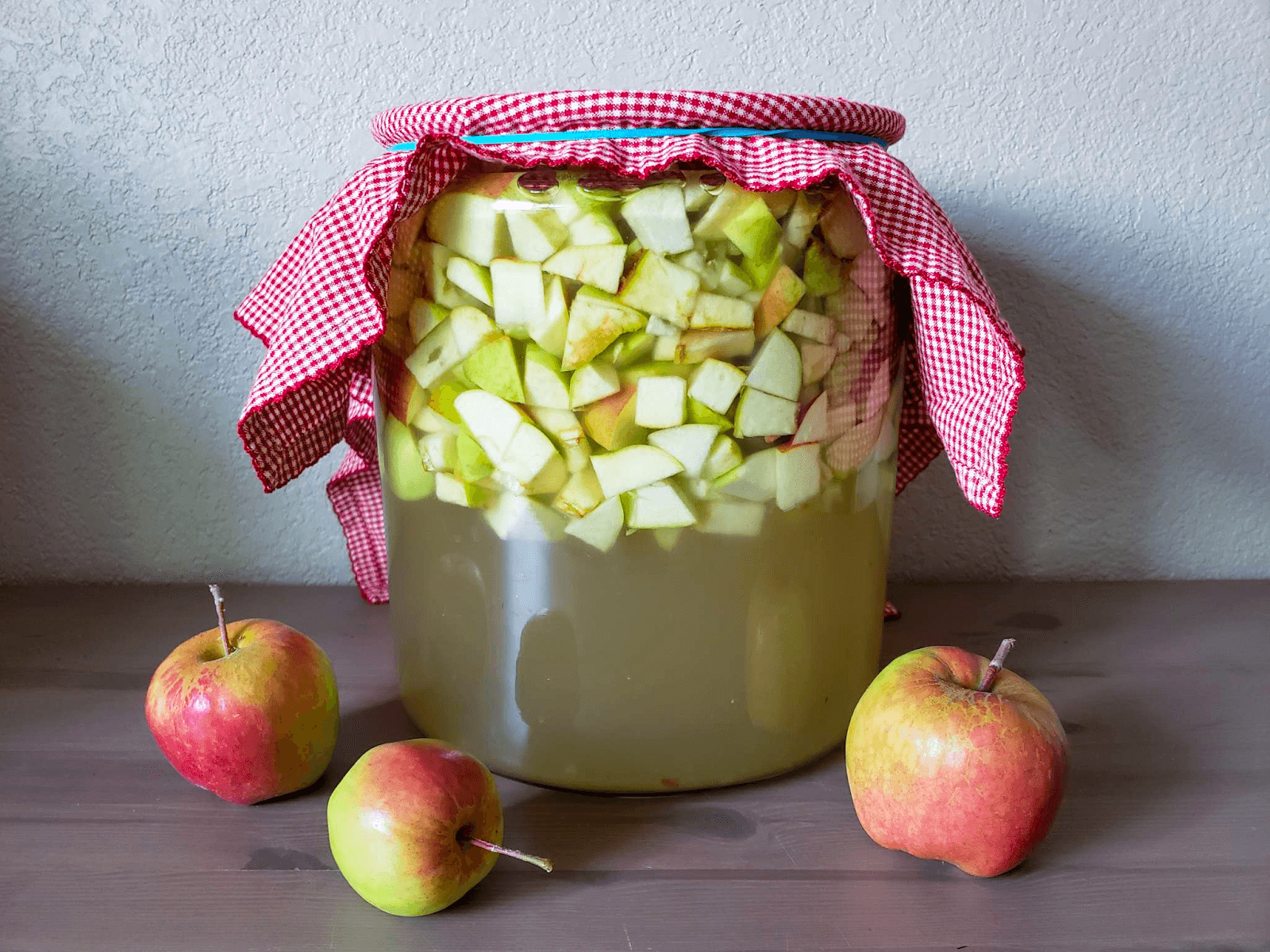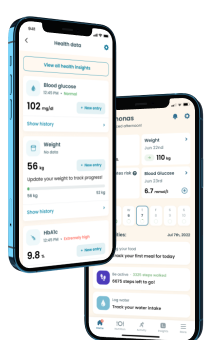Apple Cider Vinegar and Diabetes: Truth or Fallacy?
Vinegar existed as far back as 5000 BC. Records show how Babylonians used vinegar as a preservative and condiments. Egyptian urns also carried traces of vinegar, as observed by scientists. This aqueous solution has been quite an important part of many cultures, even to date.

Vinegar existed as far back as 5000 BC. Records show how Babylonians used vinegar as a preservative and condiments. Egyptian urns also carried traces of vinegar, as observed by scientists. This aqueous solution has been quite an important part of many cultures, even to date.
Apple is one fruit with various uses; whether it’s apple pie, apple juice or just as a snack, this fruit sure makes delicious delicacies. Apple cider vinegar (ACV) is a type of vinegar obtained from fermenting crushed apples (usually with high vinegar/acetic acid concentrations). It’s popular for its many uses, including as a preservative, cooking agent, etc.
Many have praised it for its health benefits, claiming it can cure illnesses, including chronic ones like diabetes and cancer. Although apple cider vinegar does offer various benefits to the body when consumed, these claims are backed by little to no scientific research and can’t be relied on.
This piece debunks popular myths about apple cider vinegar and throws light on its purported effectiveness in battling illnesses like diabetes, the existing varieties, and more.
Debunking Myths About Apple Cider Vinegar
For some years now, many have regarded apple cider vinegar as one of the healthiest foods. Some even named it a cure-all, home remedy for ailments. Namely, it’s received credit for helping with weight loss, lowering blood sugar, giving softer skin, etc.
While drinking ACV does have certain health benefits, many of these claims aren’t’ entirely true. Apple cider vinegar might not be the magic potion many think it is. Hence, in this section, we’ll be debunking some myths about ACV.
Myth 1: ACV lowers bad cholesterol
One of the major myths about ACV is that vinegar consumption helps reduce the amount of cholesterol and triacylglycerols in the body. This notion was made popular by a 2006 study claiming that acetic acid in vinegar helps reduce these “bad” cholesterols. What’s more, recent studies corroborate these findings, showing ACV does help lower lipid levels and protect the kidneys.
Unfortunately, both types of research featured rats and mice. There have been no further human trials to confirm ACV truly helps humans control their cholesterol levels. Although scientists are optimistic about these previous studies, there’s a need for more extensive studies that involve humans.
Myth 2: ACV can prevent cancer
Several foods have been tagged with the ability to prevent cancer or help manage its effects on the body, and ACV isn’t exempt from this list. While some of these foods might positively impact cancer patients, one shouldn’t place much faith in them.
For example, a few studies show apple cider vinegar can help slow the growth of cancerous cells. However, most of these studies are preliminary, and some are found inconclusive. Summarily, consuming ACV does have its health benefits, but “it shouldn’t be tagged as a miracle cure for cancer.”
Myth 3: ACV lowers blood pressure
In most people diagnosed with diabetes, high blood pressure is usually not far off. Statistics show that more than 5 out of 10 diabetes patients will eventually develop high blood pressure, reinforcing the prevalence of HBP among people with diabetes. Many natural remedies have been prescribed as cures for high blood pressure, which can either cause serious harm or just not deliver on their miracle cure promise.
Apple cider vinegar won’t lower your blood pressure. Most research suggesting that ACV lowers blood pressure feature only rats. Hence, we can’t expect the same result in humans, at least not until human clinical trials verify these claims.
Myth 4: ACV is just as nutritious as an apple
Yes, apple cider vinegar materializes by fermenting apples. However, it doesn’t contain the same nutrients as the parent fruit.
Apples are rich in potassium, vitamin C, fiber, etc. Most of these nutrients are absent or not in the right proportion in ACV as in apples. Hence, ACV shouldn’t be mistaken as a direct substitute for apples.
Myth 5: ACV has no side effects
Some claim consuming ACV comes with no side effects. This isn’t entirely true, as drinking too much ACV can be potentially damaging.
ACV contains acetic acid, which can erode the tooth enamel. Consuming it without adequate dilution can mean bad news for your teeth. It can also exacerbate some conditions like gastroparesis—a partial stomach paralysis, delaying emptying—especially in people with diabetes.
The Benefits of Drinking Apple Cider Vinegar to People With Diabetes

Having debunked some of the myths surrounding ACV, one question lingers — “Is it beneficial for people with diabetes?” Whether you’ve been diagnosed with diabetes or are nursing a prediabetes condition, you’re likely watchful of what you consume.
Some researchers have highlighted apple cider vinegar’s impact on diabetes. Are these health benefits baseless, or is there some truth to them? This section analyzes all of that and more.
ACV Controls Blood Glucose Levels
People with diabetes have a lot riding on their blood sugar levels. Excessively high levels can cause health hazards or even make a person with prediabetes develop type 2 diabetes. Hence, health professionals always promote a diabetes diet that aids less sugar intake.
People with this illness are advised to avoid processed foods with added sugar and foods with high carb content. This helps prevent blood sugar spikes and, in turn, lower blood sugar levels.
However, there are other foods you can consume that’ll help with blood sugar management. Foods particularly rich in fiber are appropriate for a diabetes diet, and studies have also shown that consuming apple cider vinegar can reduce blood sugar levels.
A 2018 study on patients with diabetes showed a significant but small reduction in mean HbA1C (glycated hemoglobin)—a blood sugar marker—after administering vinegar. However, researchers concluded there’s a need for more extensive trials to truly ascertain this treatment’s effectiveness.
Another study published in the Diabetes Care journal looked into how vinegar can help manage blood sugar levels. It concluded that consuming vinegar before bedtime significantly affects waking glucose concentrations in people with type 2 diabetes.
Additionally, a 2015 randomized study concluded that apple cider vinegar decreases postprandial hyperglycemia, hypertriglyceridemia, and hyperinsulinemia in people with type 2 diabetes. In simpler terms, this aqueous solution helps the body absorb sugar better and improves insulin sensitivity.
Looking at all these studies, we can boldly say that apple cider vinegar’s effects on blood sugar levels are evident, however small. Hence, taking ACV daily can positively influence a person’s with diabetes health.
However, experts call for further studies to ascertain the influence of ACV on blood sugar control. In this light, you’re advised not to substitute medical treatment with apple cider vinegar, at least for now.
ACV Helps With Weight Loss
Although many consider losing weight the healthy way to go, the truth is that “it’s easier said than done.” Regardless, you’d certainly feel a lot healthier after losing excess weight. Being obese is a risk factor for diabetes. Hence, people diagnosed with diabetes or those at risk of developing the illness are advised to maintain a healthy weight.
Whether to fit into that dress or reduce the risk of developing diabetes, maintaining a moderate weight can be daunting. The best way to do this is to do physical exercise and invest in a healthy diet. However, there are other means you can consider when looking to lose weight.
Some studies link apple cider vinegar with weight loss. Notably, animal studies point out that ACV helps burn fat, reduce appetite, and reduce fat storage, all of which collectively help with weight loss. While there’s no evidence that ACV will yield the same results in humans, it outlines a clear path that’ll most likely lead to losing some weight following ACV consumption.



Taking apple cider vinegar also leads to delayed gastric emptying, which is the time it takes food in the stomach to move to the duodenum. This delay causes the stomach to feel full for a longer while, preventing overeating and hence helping maintain a healthy weight.
However, a 2007 research on apple cider vinegar’s effect on type 1 diabetes patients with diabetic gastroparesis points out some alarming reports. Gastroparesis is a condition where the stomach muscles can’t push digested food further down the digestive tract. The research concluded that ACV intake in these patients might extend gastric emptying time, worsening glycemic control.
Sticking to a proper diet plan that includes nutrients like fiber and protein will also go a long way in helping you lose weight.
Other Health Benefits of Apple Cider Vinegar
Apart from the diabetes-inclined effects that ACV manifests, it has additional health benefits, as highlighted below:
- It boosts skin health
- It preserves food
- A great disinfectant
- It enhances gut health
Types of Apple Cider Vinegar
When shopping for vinegar, you’d certainly come across varieties of apple cider vinegar. There exist two major types of ACV, as listed below:
Apple Cider Vinegar With the Mother
During production, apples undergo fermentation to form ethanol, which is then converted to acetic acid following the introduction of bacteria. This process leads to strands forming in the cider, popularly referred to as “the mother.” These strands give ACV a cloudy appearance.
“The mother” has been observed to contain essential enzymes that help break down food and perform many other functions. It’s believed that leaving the mother in will enhance apple cider vinegar’s effects on the body. This component also comprises probiotics — healthy bacteria that boost the immune system and prevent bowel issues.
Filtered Apple Cider Vinegar
This type of vinegar has the mother strained out. Some manufacturers believe that the cloudy appearance “the mother” introduces to ACV may make people think the product has gone bad. Hence, they filter it to produce a liquid that’s clearer/amber-colored.
Experts claim many benefits associated with ACV reside in “the mother.” Therefore, filtering it out might not be the best option.
How to Make Apple Cider Vinegar at Home

You can get apple cider vinegar from almost any grocery store. However, if you want to save some money or want to DIY, you can follow simple steps to make your apple cider vinegar in your kitchen.
Here’s a list of what you need:
- Apple
- Water
- Sugar/Honey
Now, we walk you through the various steps of preparing a wholesome ACV formula:
Step 1: Choose your apples.
Choosing the right apples is likely the most important step you would have to take. This is because the apples you choose significantly affect how well your apple cider vinegar turns out. Ensure you select sweet apples for your cider.
Also, to get the best flavor, you can combine varieties of apples. There’s also an option of using scraps from previously consumed apples. As such, you may want to keep apple peels and scrap when you’re done cooking by storing them in your refrigerator.
Step 2: Wash your apples.
Endeavor to wash any fruit before consuming it. This also goes for apples going into your vinegar production. Rinse them thoroughly with cold water and scrub clean of dirt and debris you don’t want in your vinegar. Also, if you’re using scraps, ensure they’re washed clean.
Step 3: Chop the apples, keep them in a jar and fill with water.
The next step to take is to chop your apples into smaller pieces. Cutting them into cubes will make the apples ferment faster. You don’t need to peel the apples before cutting them. If you’re using scraps, you can also cut them into smaller pieces.
Ensure you pour the apple slices into a glass jar. It’d be best not to use stainless steel to process your apple cider vinegar. When the apple ferments, the acidity will corrode the steel and compromise the taste and flavor of your cider.
Next, fill the jar with water, to the brim or until all apple cuts are covered with water. You can opt for filtered or mineral water for better results.
Step 4: Add sugar.
One teaspoon of sugar should suffice for your apple cider. The sugar will go through a fermentation process that turns it into alcohol, making the apple cider vinegar. If you’re worried about sugar, especially as a diabetes patient, you can choose honey. However, sugar might give you the best result.
Step 5: Cover and leave to ferment.
Cover the mouth of the jar with a piece of cloth and secure it in place with a rubber band. Ensure the cloth material is breathable to allow gasses to escape while the mixture ferments. However, the cloth shouldn’t be too porous to avoid external particles like dirt entering the jar.
Ensure you place the jar in a dark, warm place at about a temperature of 21 °C. This can be in the corner of your kitchen, at the bottom of the pantry, or any other ideal location.
Stir the mixture every two days while you wait and patiently observe the fermentation process. Fermentation should take about a week or two, after which the apples will sink to the bottom — an indication the fermentation process is complete.
Step 6: Strain the apples.
After confirming the mixture is perfectly fermented, the next thing to do is strain the apples from the cider. You can use a regular sieve or a clean piece of cloth. Then, turn the drained cider back into the jar, cover it with the fabric, and keep it in the same warm, dark place.
After doing this, leave the apple cider to ferment for another 3–6 weeks. Ensure you stir the jar often (3–4 days). Slowly but surely, this cider turns into apple cider vinegar.
Step 7: Pour into a lidded glass jar and store.
Transfer the fermented liquid into a clean glass jar with a tight lid and immediately store it in your freezer. This’ll end the fermentation process. However, if you keep it at room temperature, the liquid might continue to ferment in this state.
“The mother” might start to appear in the form of a gelatinous blob later. You can use this in future preparation of ACV to speed up the process.
Wrapping It Up
This guide has successfully explored the benefits of apple cider and its potential risks. Various myths still surround this drink, some of which have been debunked above. Previous research arrived at varying results, some of which praise the health benefits of ACV while others warn against its consumption. The scientific community asserts that there’s a need for more encompassing human studies to reinforce the positive effects one can expect from consuming ACV.
You can rest assured that consuming apple cider vinegar as a person with diabetes is relatively safe. However, ensure you take at most 2 teaspoons daily, diluted in a glass of water. Taking ACV directly without diluting can erode your tooth enamel in the long run.
Managing diabetes can be incredibly stressful when you don’t know how to go about it. Why not take the easy route by utilizing our diabetes management application, Klinio? This app is specially designed to help people with diabetes better manage their condition. You get access to a well-optimized diabetes meal plan, exercise routine from beginner to advanced level, weight management plans, and more.
Take a quiz and get your diabetes-management plan today!








